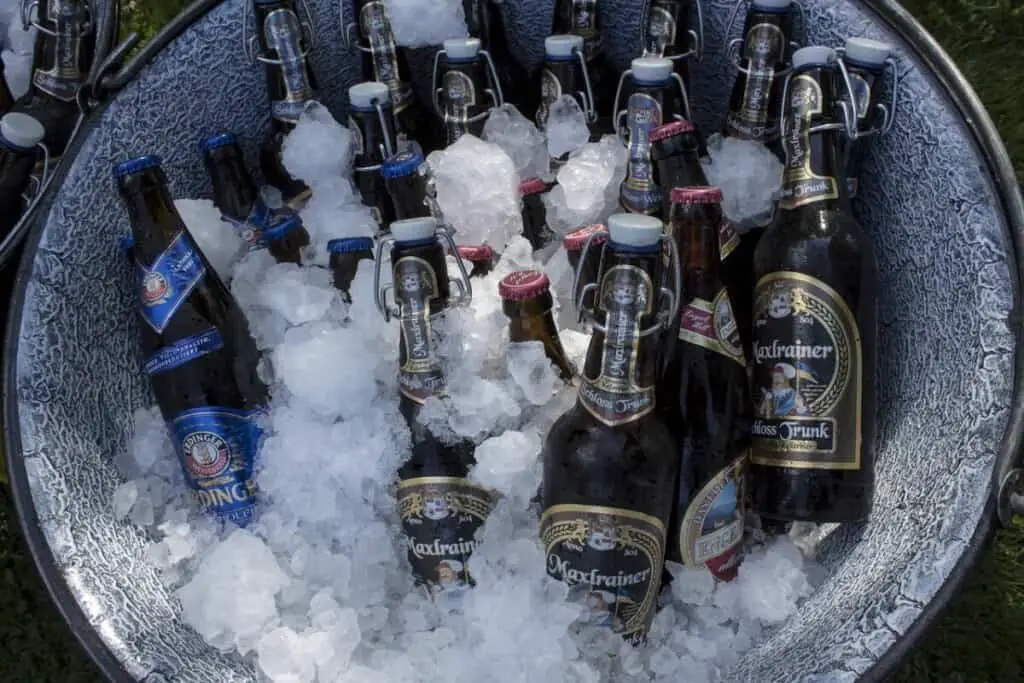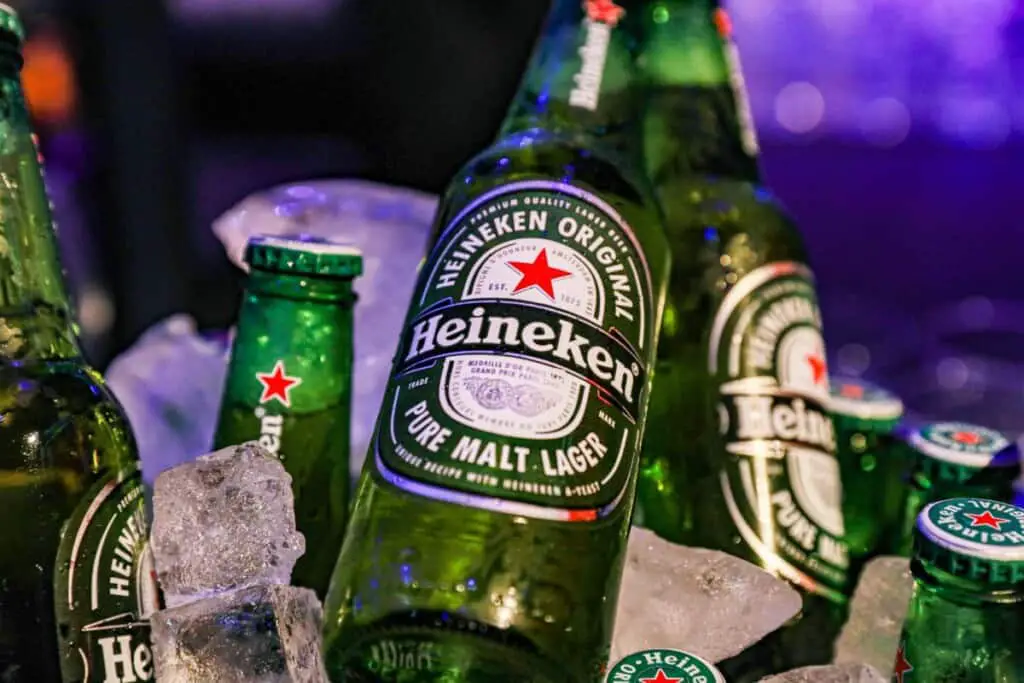As homebrewers we are hardwired to experiment. Brew something nobody else has ever brewed before. So it would make sense that we would even want to cross the ale/lager yeast barrier. So today we are going to explore the creation of a pseudo lager using ale yeast.
You can use ale yeast to make something akin to a lager. Fermenting a clean ale yeast at the low end of its temperature range produces a crisp beverage with few fruity esters. Lagers and ales use two different yeast strains. Pastorianus is a lager strain while cerevisiae is an ale strain.
While you can essentially create a delicious lager style beverage that closely mirrors a lager, it is not in fact a lager. Purists will argue you to the end of the earth, because of course they use two completely different strains of yeast.
But, in the good nature of experimentation we are going to explore what makes a lager and how we can mimic it with an ale yeast.
Ale Yeast at Lager Temperatures
Depending on what you want to achieve by creating a lager from utilizing ale yeast, I’m sorry to say you will need to ferment at lower temperatures. This means you will need a fermentation chamber for temperature control.
There is just no getting around it, in order to make something that has a cleaner flavor, cold temperatures are what you need for the yeast to ferment clean.
But, if you are just planning on creating a smooth lager type beer sooner and without dropping the temperature super low, than it is entirely possible.

Definition of a Lager
The lines of a traditional lager seem to be blurring. Whether its because there are many who are unknowingly spreading false information or whether the style is changing. But, at the root of it a lager is a beer that is bottom fermented cold and stored long term at colder temperatures.
Typically the yeast strain Saccharomyces Pastorianus is used for lagers and this is a bottom fermenting yeast. While ales are top fermenting yeasts. It ferments much slower and allows a smooth beer without any fruity off flavors or diacetyls.
But, there are many that believe that you don’t really need a lager yeast to make something that is akin to a lager. A clean crisp and refreshing beer.
This may have some merit since we have come a long way when it comes to the types of yeast we have available. There are many clean fermenting ale yeasts that can make an impressive lager.
Just check out how Martin Keen made a lager on the homebrew challenge with an ale yeast. In the video he uses WLP001 an ale yeast. He doesn’t even lower the temperature to the lowest part of the range!
What Ale Yeasts Can You Use to Lager?
Saccharomyces Cerevisiae is the scientific name for ale yeasts or top fermenting yeasts. In order to finish off our definition of a lager above we will need to explore yeast flocculation.
Lagers are typically clearer than ales, this is because the yeasts used tend to pack down at the bottom of the fermenter as trub. Less yeast is left in suspension contributing to a cloudy beer. So to mimic this with our ale yeast we absolutely need to choose some highly flocculating ones.
Here are some typical ale yeasts that many people use in order to produce a pseudo lager.
| Yeast Name | Fermentation Range |
|---|---|
| Lallemands Nottingham Ale Yeast | 50-72F |
| White Labs WLP007 | 65-70F |
| Safale US-05 | 60-72F |
| Mangrove Jack New World Strong Ale | 61-72F |
| WPL029 Kolsch | 65-69F |
Note: When buying liquid yeasts online make sure the location served is close to you. In the case of adventures in homebrewing it is in Ohio and Texas. The yeast should be kept cold while traveling.
Some of the above yeasts, don’t have a high flocculation. This could pose an issue when clearing the beer so the lagering process or cold crashing is definitely recommended.
All of these yeasts do promote malt flavors which is important in a lager. They are also very clean without fruity esters from the yeast.
Diacetyl Rest and Lagering
Whether or not you chose an ale yeast that can ferment at super cold temperatures. Lets say about 50 degrees or so, which can be a bit of a stretch for some. You will need to make sure you bring your yeast up to a temperature to as close to 62F as possible.
Pro Tip: Some yeast descriptions have information about diacetyl rests, when fermented cold that are at different temperatures than above, check the labels.
Diacetyl rest temperatures will finish off your fermentation by quickly having your yeast finish off any remaining sugars. These sugars could result in bottle bombs so its highly recommended. It will also push out CO2 that might cause off flavors.
I actually wrote an article about CO2 producing bad flavors in mead and how to degas. It’s essentially the same idea for diacetyl rest.
Now once you have gotten all of your CO2 out and all of your fermentable sugars taken care of, its time to slowly drop your fermentation chamber temperature over the course of many days until you get it too around 35F. Then you can age it for a couple months at this temperature.
Lagering is essentially a lot like cold crashing except its a more gentle process and done for much longer periods of time. It will result in anything still remaining in suspension to drop to the bottom. This will result in a crystal clear beer. Even if its an ale.
Different Lager Styles to Brew
A lot of people think lagers are defined by their color, while that is partly true since lagers are super clear compared to their ale counterparts, its not entirely true.
You see, lagers can be dark think Vienna style lagers. These beers are actually very clean and crisp though. Now lets take a look at some popular examples.
Pilsner

This is the beer that likely made everyone believe lagers were super clear and pale in color. This beer style is very difficult to brew since there is no way to hide off flavors. Brewing this with an ale yeast would likely be more forgiving and a good way to transition your skills into lager brewing.
This style I probably would not try to replicate with an ale yeast since its super light. Maltier varieties will likely be easier to lager successfully.
Vienna
This is an amber colored lager that is light clean and crisp. It accentuates the malt flavors but is also clean in taste. You would use something like a WY2308 yeast to produce one of these. But, Nottingham ale yeast might be able to do the trick.
Marzen/Octoberfest
This beer is different than the Vienna style since it doesn’t really on sweeter malts. This should be more of a nutty flavor, think brown ale. These beers were traditionally brewed in march and then lagered until October when it was enjoyed.
Lager Yeast at Ale Temperatures
Since you’ve asked the question of whether or not you can brew a lager with ale yeast I’m sure you have wondered if you could do the opposite and brew lager yeast at ale temperatures.
The answer to this question is yes, but it really depends on the lager yeast you use. Some yeasts are better than others at this. You will need to choose a lager yeast that does not produce off flavors at higher temperatures.
Other than that, I don’t think there are that many more issues with it, but of course there is less variety since lager yeasts are not nearly as well developed as ale yeasts at this point in time.
Checking Boxes to Make a Lager
When I did the initial research into ale yeasts and the lagering process I realized that lagering can really be a sliding scale. It doesn’t have to be perfect after all, we are brewing for ourselves.
| Check Box | Steps to Making a Lager |
|---|---|
| Temperature controlling fermentation. | |
| Diacetyl rest. | |
| Long term cold storage. | |
| Clear color and finish. | |
| Brewing with lager yeast. |
At the end of the day if all you really want is a delicious lawnmower beer then you can cut down on the time by not lagering for long periods, but you can still get a crisp, clean, and clear beer.
In fact transitioning to brewing cleaner beers at lower temperatures is a great way to up your game and transition into the difficult world of lager brewing.
I liken it to stripping away layers of your beer to reveal where you have flaws in your brewing process. Then you can fix those flaws before jumping head on into a lager.
